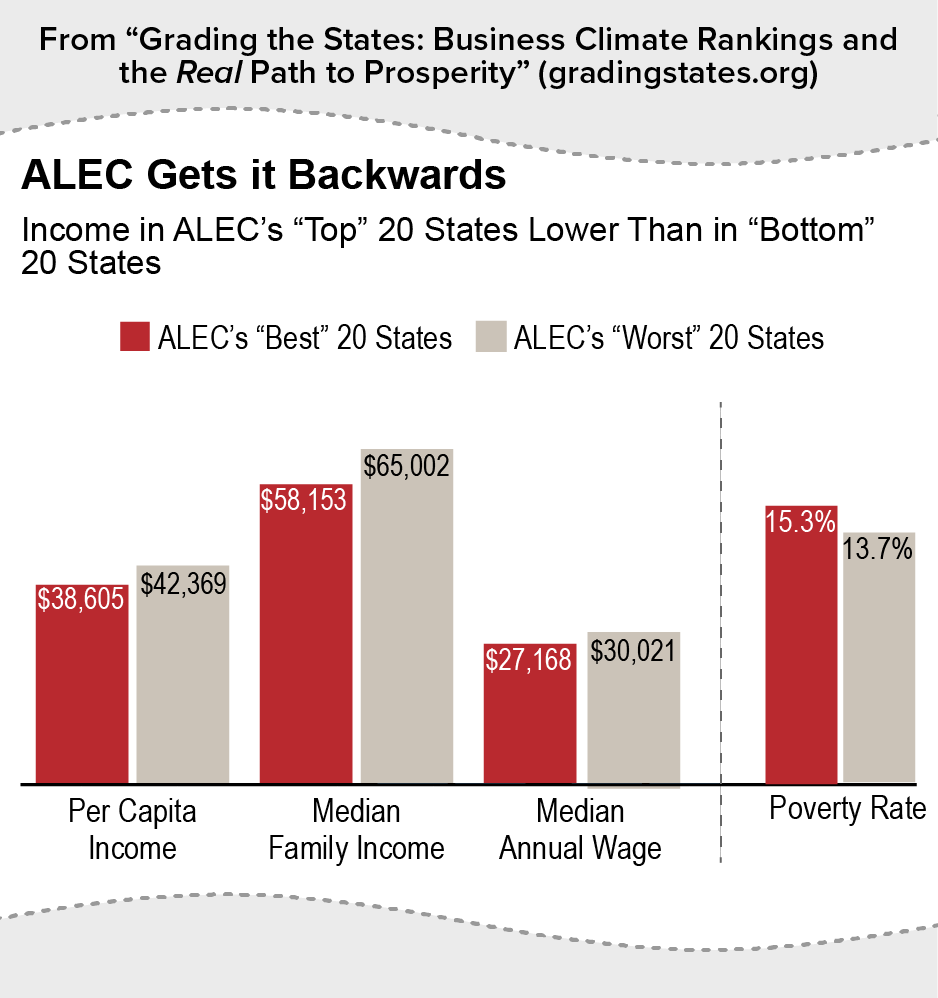BEYOND THE NUMBERS
The new website Grading the States: Business Climate Rankings and the Real Path to Prosperity debunks the state rankings from several organizations purporting to measure each state’s “business climate” and prospects for economic growth. These rankings don't amount to much more than calls for cutting or eliminating taxes and rolling back workers' rights.
The Iowa Policy Project, a member of CBPP’s State Priorities Partnership, created the site with our help. It shows that the rankings’ indicators and methods of measurement are highly flawed and that the rankings often contradict one another. Also, despite the groups’ focus on reducing taxes, the rankings generally don’t accurately portray businesses’ actual taxes.
One particularly egregious example is the American Legislative Exchange Council's (ALEC) Economic Outlook Ranking in the group’s annual “Rich States, Poor States” report. The highest- ranked states have:
- low top marginal income tax rates;
- fewer public-sector workers;
- fewer worker protections; and
- less regulation.
While ALEC claims these policies promote economic growth and prosperity, the evidence shows otherwise. In fact, ALEC’s 20 “best” states are actually poorer than its 20 “worst” states, as this graph from “Grading the States” shows.
The ALEC agenda is the basis of Kansas’ income tax cut experiment, which has undermined the state’s ability to invest in areas like K-12 education and balance its budget. The state is in a precarious fiscal position, and the promised boost to the economy hasn’t materialized — and probably never will. That's because big, broad-based income tax cuts are a poor strategy for economic growth, as both recent history and the preponderance of research show.
“Grading the States” exposes the rankings for their disservice to state policy debates and offers evidence for what really matters for state economic growth — investing in kids, infrastructure, and a healthy, productive workforce.

